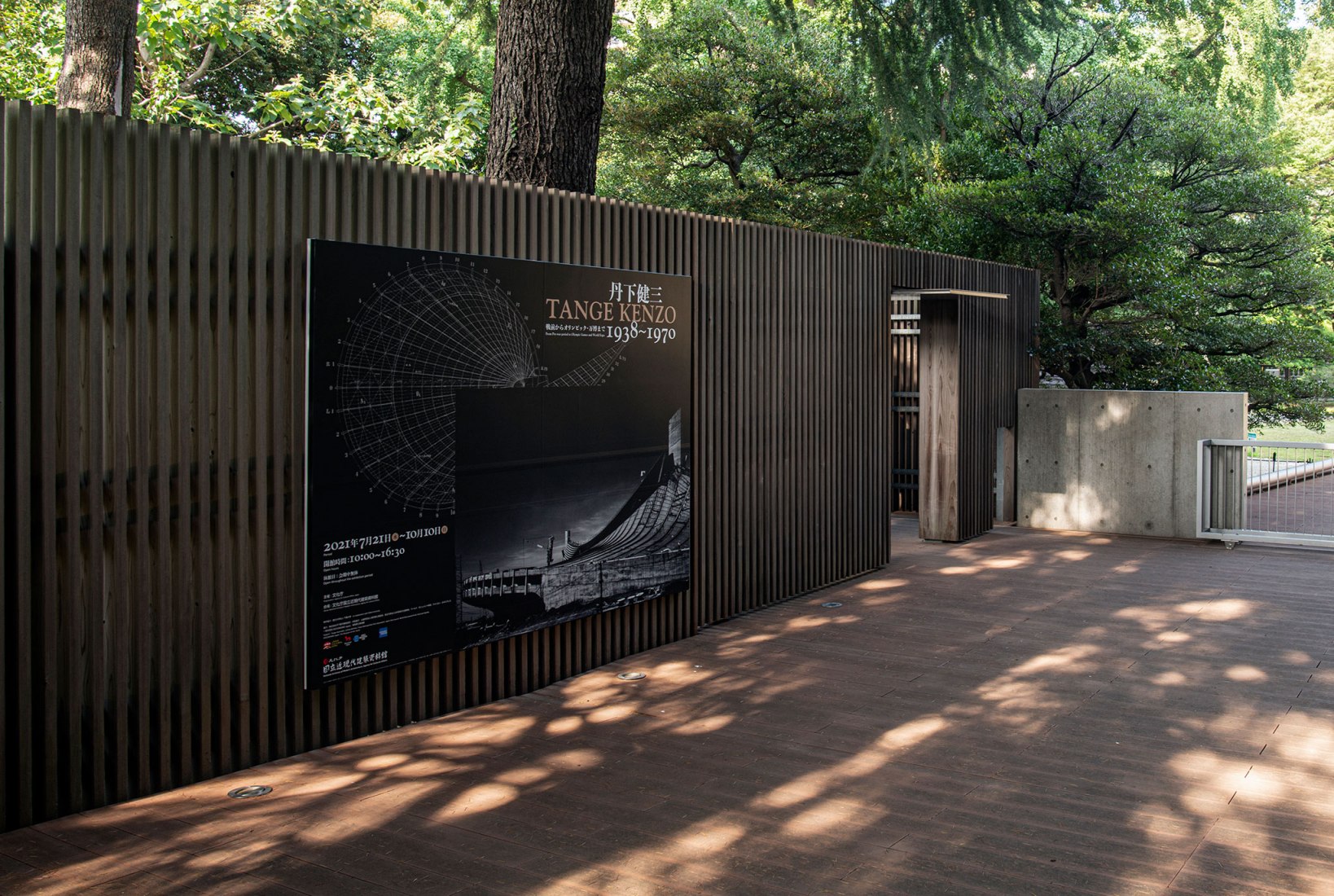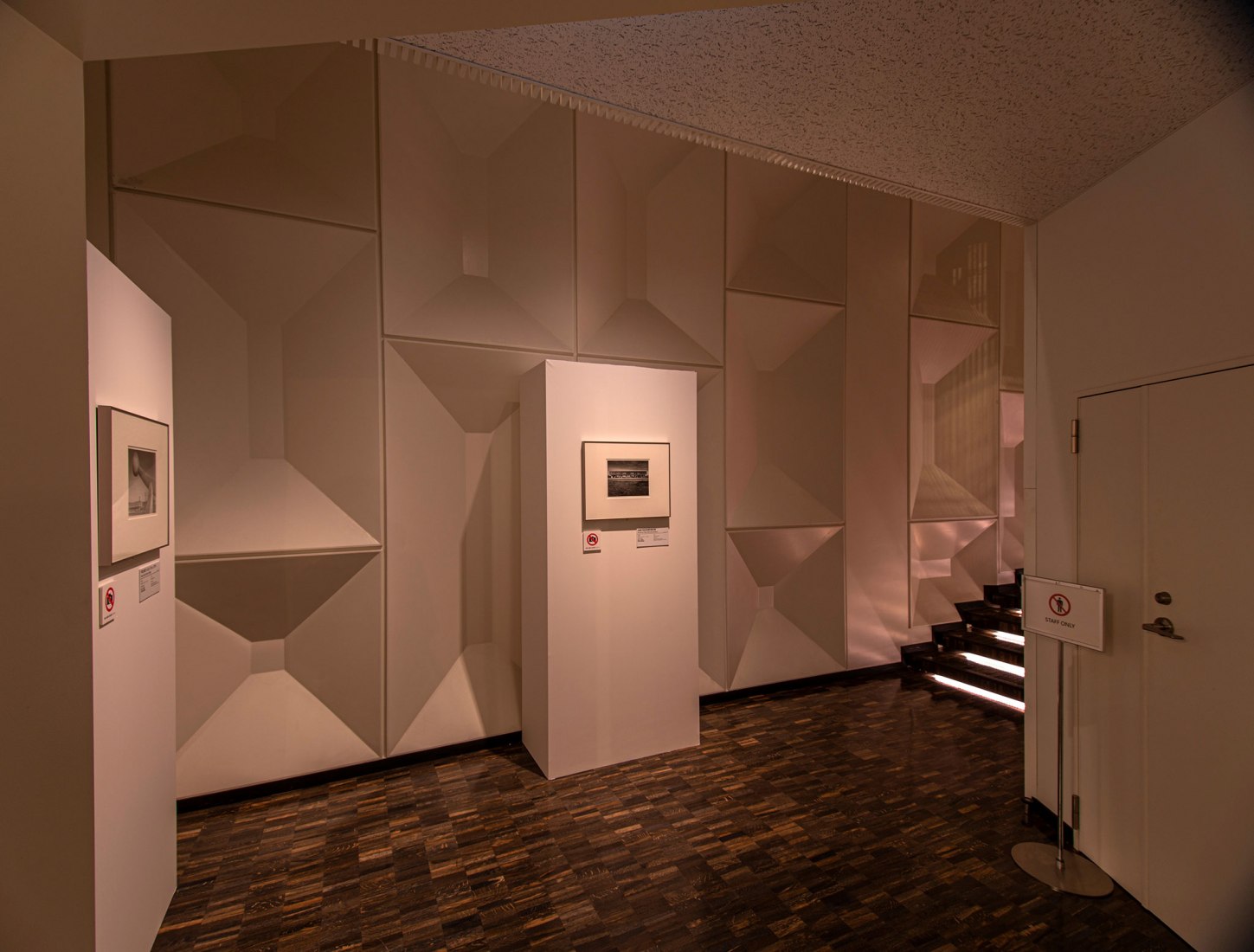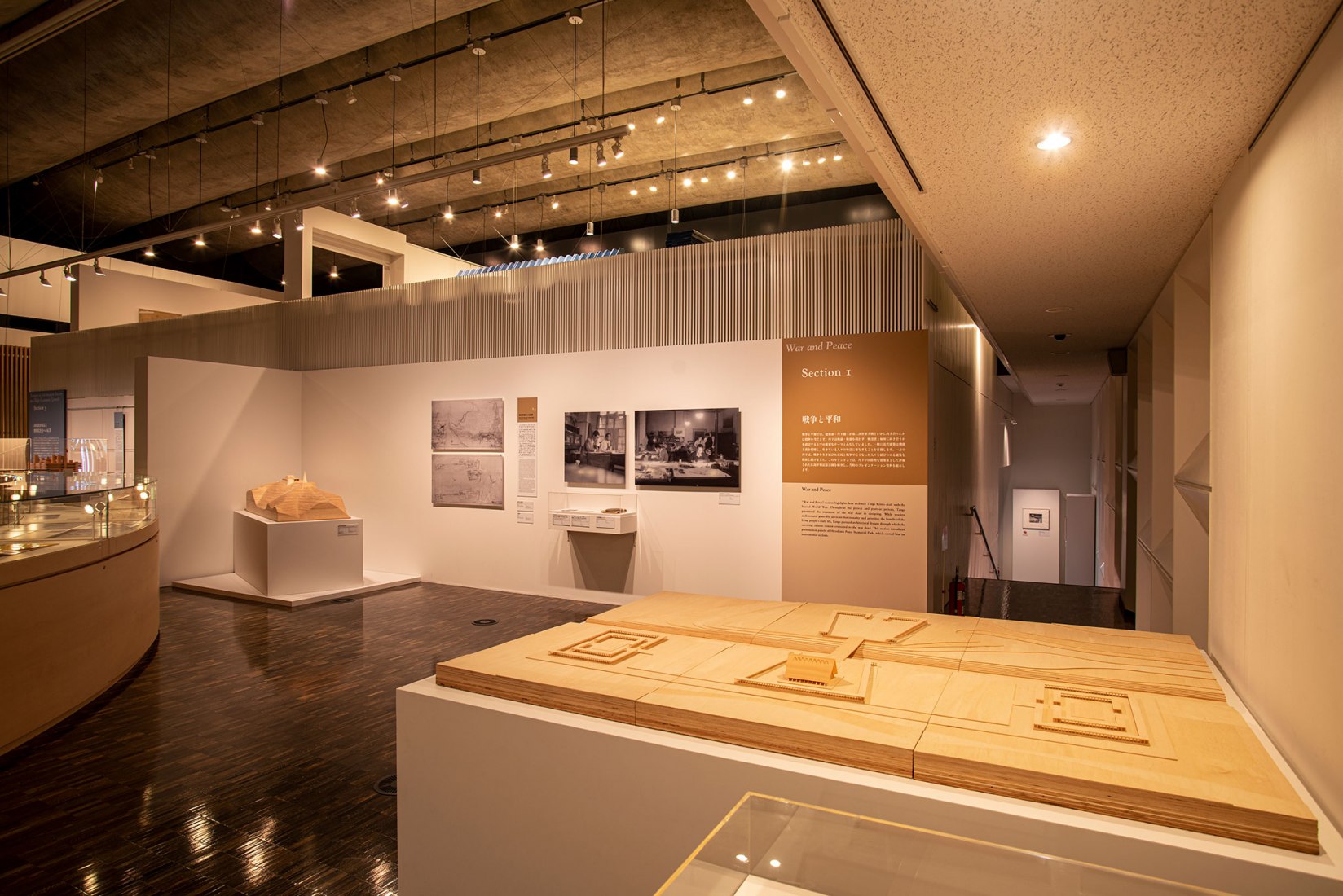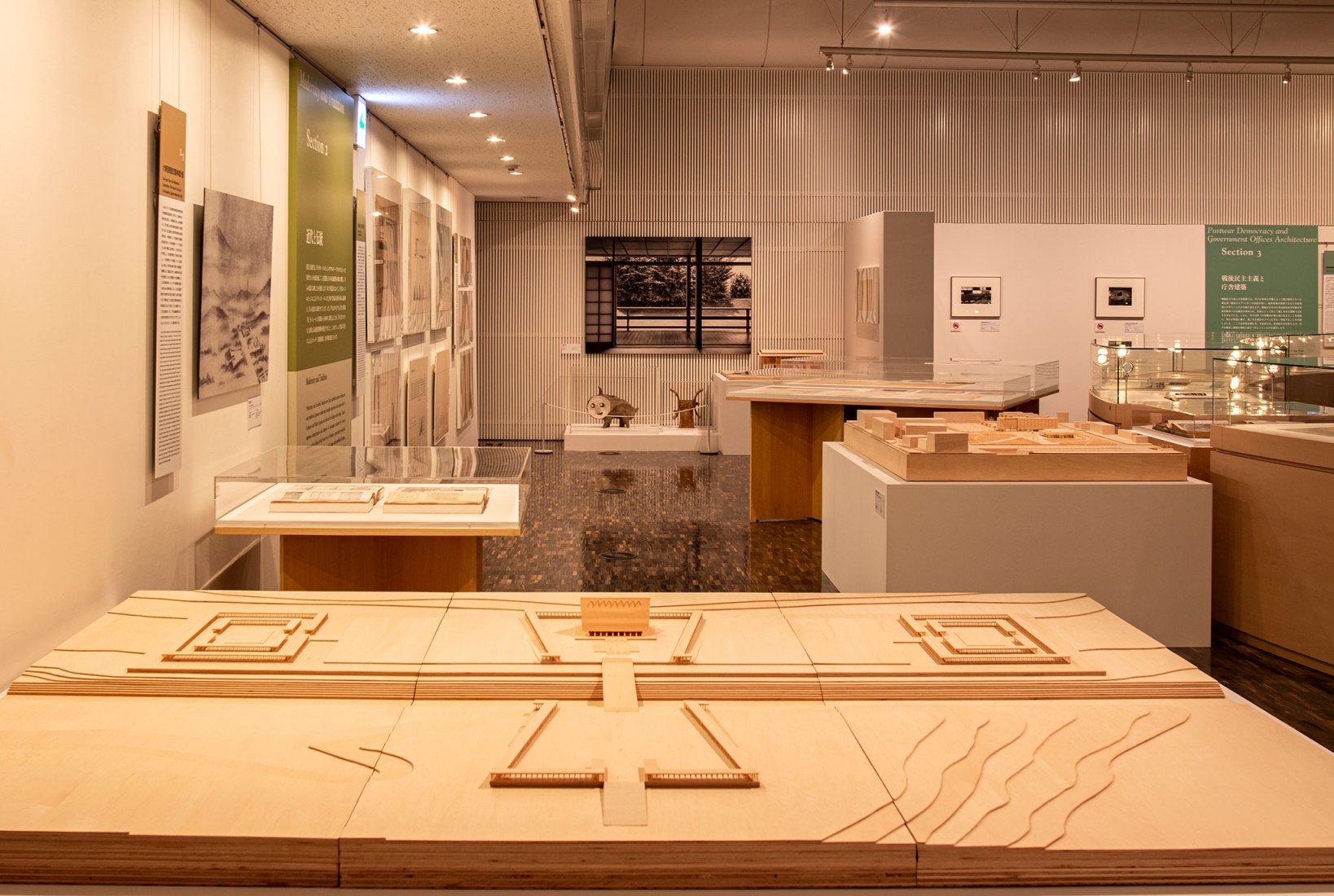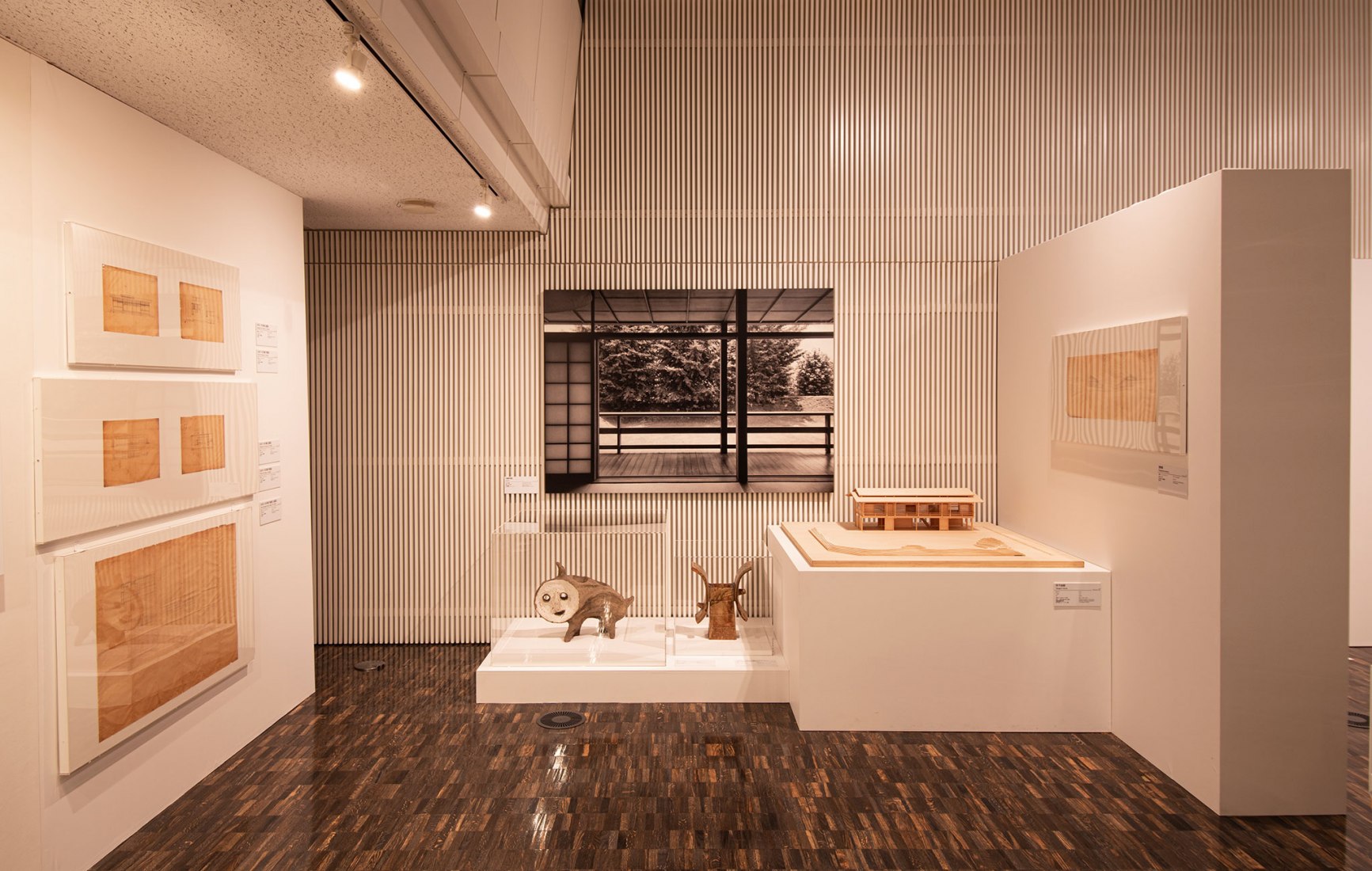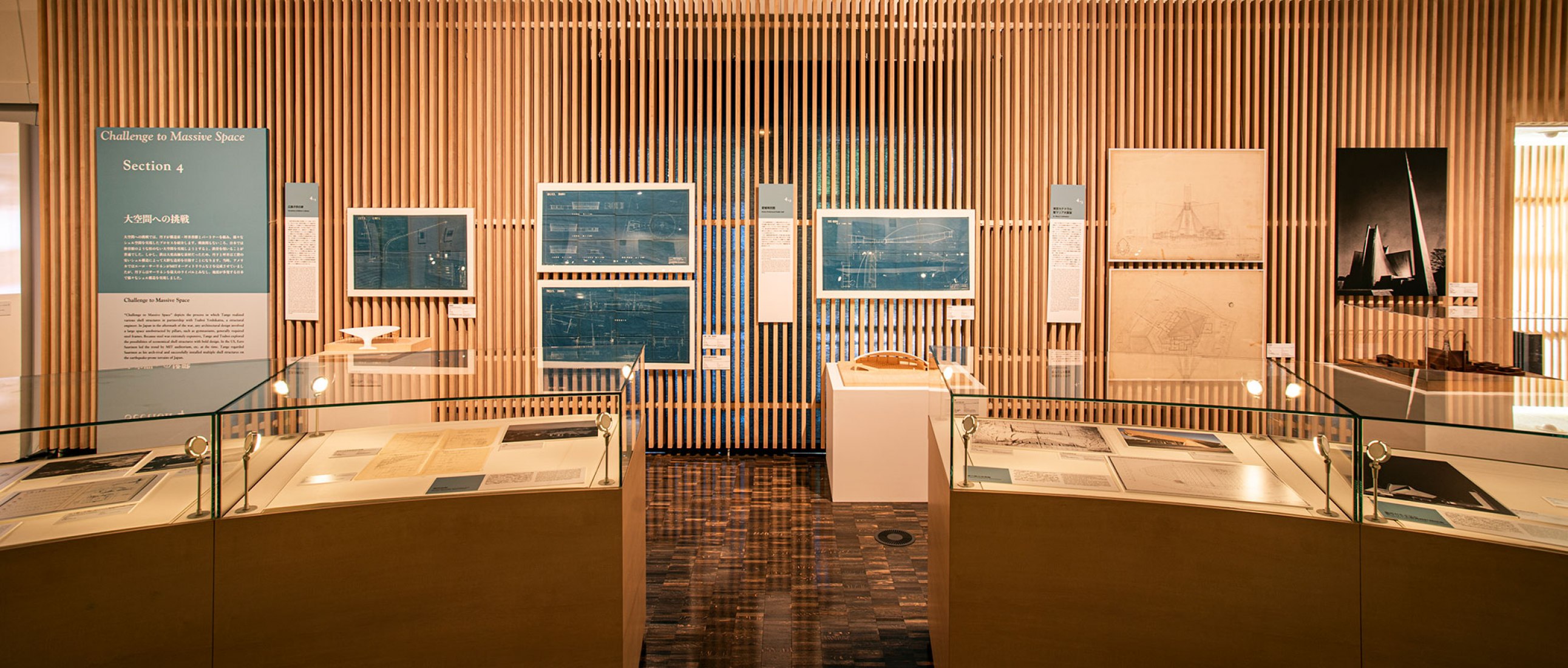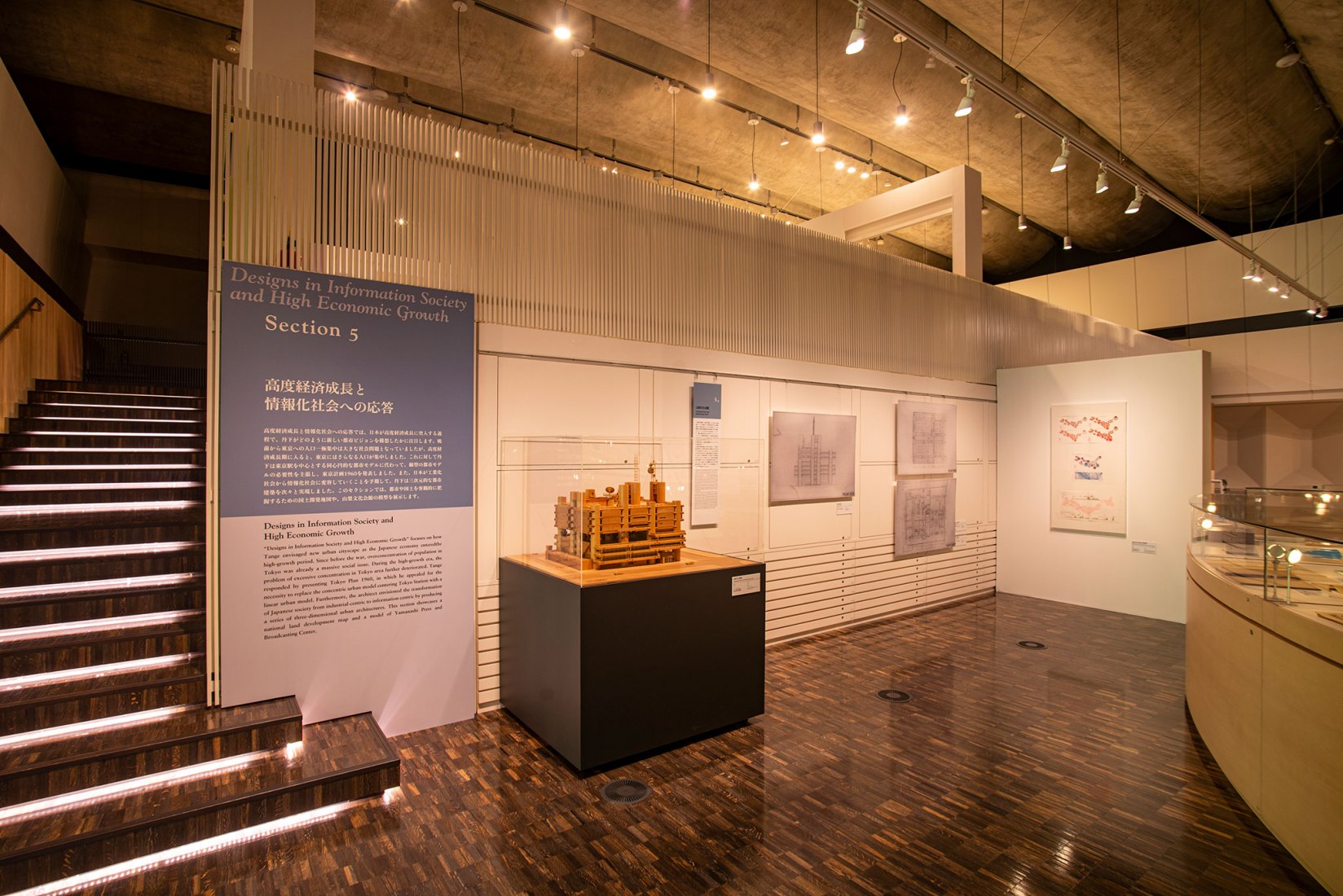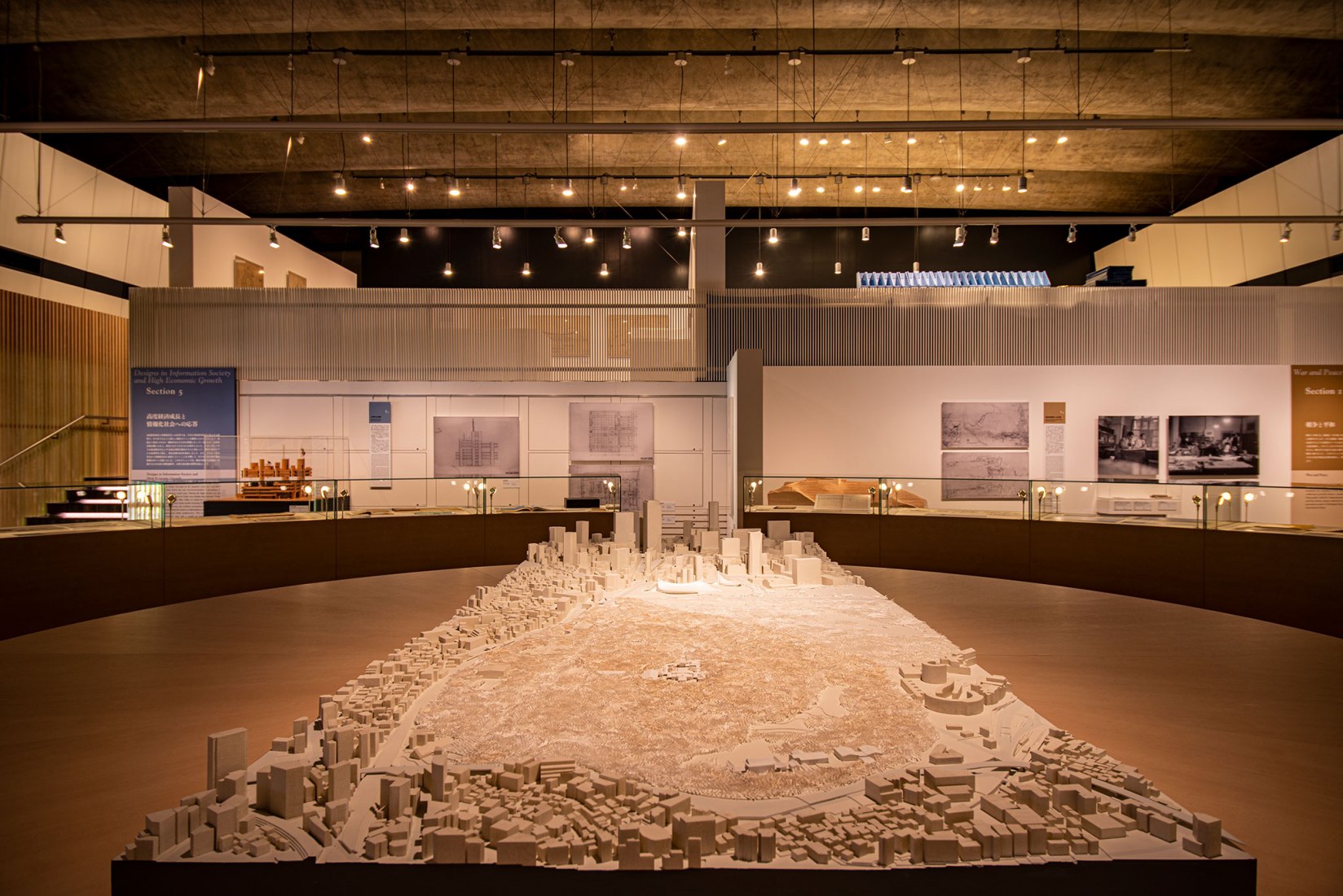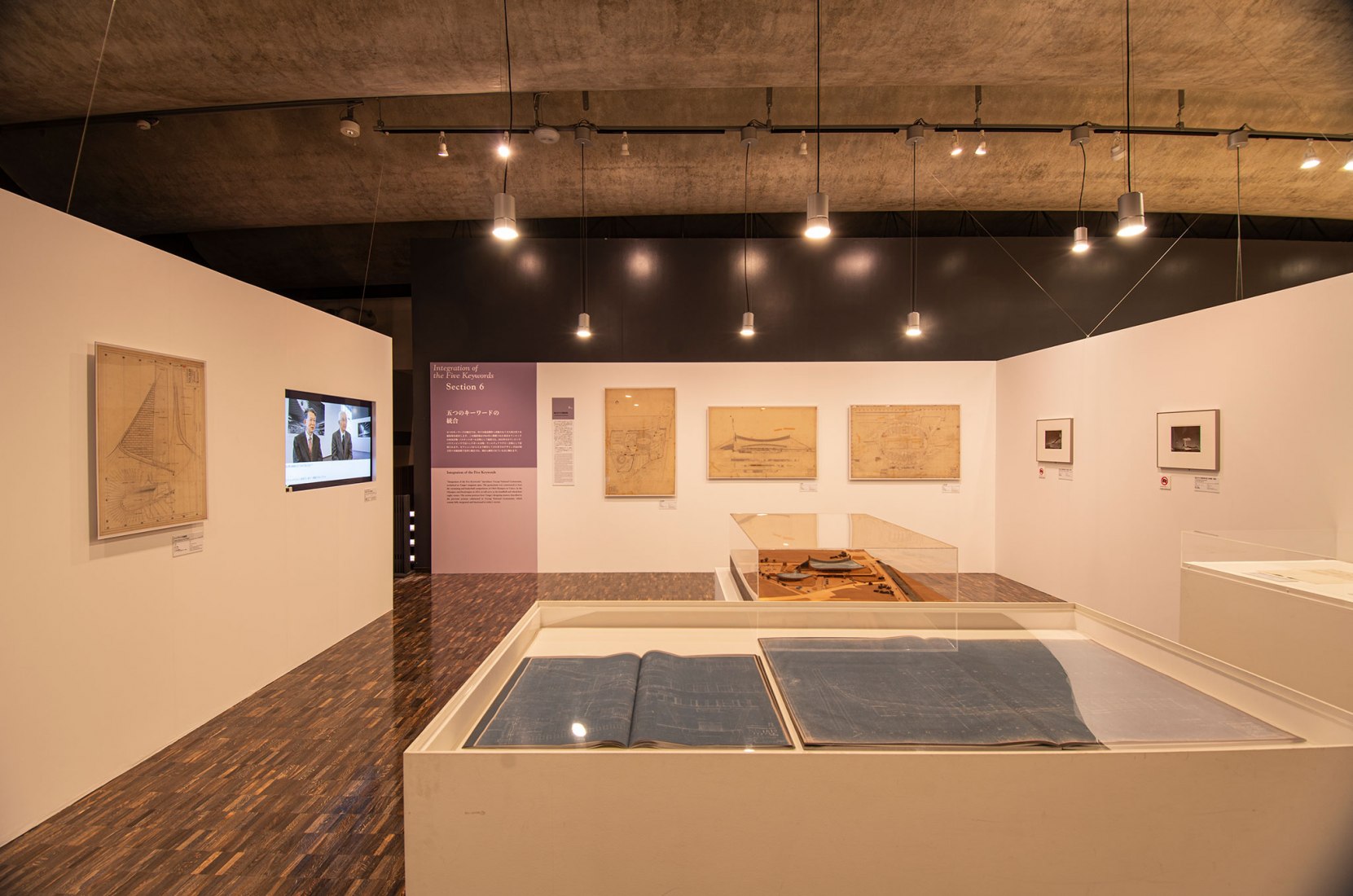Kenzo Tange (1913-2005). He was born in the small city of Imabari, Shikoku Island, Japan in 1913. Although becoming an architect was beyond his wildest dreams as a boy, it was Le Corbusier’s work that stirred his imagination so that in 1935, he became a student in the Architecture Department of Tokyo University. In 1946, he became an assistant professor at Tokyo University and organized the Tange Laboratory. His students included Fumihiko Maki, Koji Kamiya, Arata Isozaki, Kisho Kurokawa, and Taneo Oki.
Tange was in charge of the reconstruction of Hiroshima after World War II. The Hiroshima Peace Center and Park begun in 1946 made the city symbolic of the human longing for peace. Architecturally, the Peace Center shows a deep understanding of traditional culture while at the same time is a signpost in the search for a modern style in Japan.
Tange research and interest in urban planning extended throughout his career. His doctorate, completed in 1959, was titled, "Spatial Structure in a Large City," an interpretation of urban structure based on people's movements commuting to and from work. His "Plan for Tokyo 1960" was the Tange Team's logical response to these problems, giving thought to the nature of the urban structure that would permit growth and change. His Tokyo Plan received enormous attention worldwide, for its new concepts of extending the growth of the city out over the bay, using bridges, man-made islands, floating parking and mega structures. Other urban design and planning projects were begun in 1967 for the Fiera District of Bologna, Italy, and a new town with residences for 60,000 in Catania, Italy.
For his Tokyo Cathedral of Saint Mary, he visited several medieval Gothic examples. "After experiencing their heaven-aspiring grandeur and ineffably mystical spaces," he says, "I began to imagine new spaces, and wanted to create them by means of modern technology."
Yamanishi Broadcasting and Press Center (1966) in Kofu, Japan uses many of Tange's new theories—cylinders house staircases, elevators, air conditioning and electrical equipment systems. The horizontal spaces connecting them are likened to the buildings along a street. Some plots are vacant and others are occupied. An important aspect was the expansion potential of the complex. Open spaces between floors, which now serve as terraces and roof gardens, could be enclosed when needed.
In 1987 he won the Pritzker Prize, and he revealed his plans for the new Tokyo City Hall Complex. Since built, the complex comprises an assembly hall, a civic plaza, a park, and two tower buildings. The Akasaka Prince Hotel (1982) in Tokyo has become an important landmark. Others include the Sogetsu Center (1957), the Hanae Mori Building (1979), the Hyogo Prefecture Museum of History (1982), the Ehime Prefecture Culture Center (1985), the Toin School (1986) in Yokohama,—and new projects that are still in the design stage, such as the Yokohama Museum of Art, and the Tokyo Headquarters of the United Nations University.
Tange's only completed project in the United States, to date, is his expansion of the Minneapolis Art Museum, originally designed in 1911 by McKim Mead & White in the neoclassic style. Completed in 1975, the expansion, almost doubling the size of the original 120,000-square-foot structure, was accomplished with large symmetrical wings. Other works outside of Japan include major buildings in Singapore: the Overseas Union Bank, the GB Building, the Telecommunications Centre, and the Nanyang Technological Institute.
In all of his projects, there is a recurrent theme that Tange has verbalized, "Architecture must have something that appeals to the human heart, but even then, basic forms, spaces and appearances must be logical. Creative work is expressed in our time as a union of technology and humanity. The role of tradition is that of a catalyst, which furthers a chemical reaction but is no longer detectable in the result. Tradition can, to be sure, participate in a creation, but it can no longer be creative itself."
In addition to his architectural practice, Kenzo Tange has been a guest professor at Massachusetts Institute of Technology, as well as a lecturer at Harvard, Yale, Princeton, Washington University, Illinois Institute of Technology, the University of California at Berkeley, and the Universities of Alabama and Toronto.








![The Kenzō Tange Archive [Kagawa Prefectural Government Building]. Gift of Mrs. Takako Tange, 2011. Courtesy of the Frances Loeb Library, Harvard University Graduate School of Design The Kenzō Tange Archive [Kagawa Prefectural Government Building]. Gift of Mrs. Takako Tange, 2011. Courtesy of the Frances Loeb Library, Harvard University Graduate School of Design](/sites/default/files/styles/mopis_news_carousel_item_desktop/public/metalocus_kenzo-tange_yoyogi_11.jpg?itok=zJ14doSU)

!["Yoyogi Gymnasium" (Roof Plan) The Kenzō Tange Archive [Yoyogi Gymnasium]. Gift of Mrs. Takako Tange, 2011. Courtesy of the Frances Loeb Library, Harvard University Graduate School of Design / Tange Associates "Yoyogi Gymnasium" (Roof Plan) The Kenzō Tange Archive [Yoyogi Gymnasium]. Gift of Mrs. Takako Tange, 2011. Courtesy of the Frances Loeb Library, Harvard University Graduate School of Design / Tange Associates](/sites/default/files/styles/mopis_news_carousel_item_desktop/public/metalocus_kenzo-tange_yoyogi_13.jpg?itok=E7dnwg5H)
